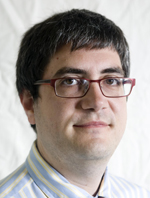HESCAP
A new generation high energy supercapacitor based system

Financed by
Número de expediente: FP7-ENERGY-214405.
Partners
-
Ceit-IK4
-
iMdea energía
-
Leti
-
Skeletontech
-
National Technical University of Athens
-
APCT-Ukraine
Summary
Energy storage is recognised as a key element for energy networks in the near future. Regarding to traction energy networks, and to the drive-trains of hybrid or full-electric vehicles, it is widely accepted that the use of energy storage systems (ESS) can lead to energy savings, installation cost savings and improved reliability and quality of the local electricity grid.
This kind of networks needs ESS capable of storing and releasing energy in the power range from a few hundreds of kW up to 1MW, with a high duty cycle to manage frequent starts and stops.
Dealing with these applications, and among other ESS, supercapacitors (SC) appear as a very promising energy storage technology due to their high power density, high efficiency and very long life cycle.
However, it is necessary a step forward in increasing the energy density in order to cover the whole range of specifications and to be fully competitive regarding to the cost of the stored kW-h, mainly over batteries.
The main objective of this project is to develop a new generation high energy supercapacitor based system (HESCAP system), capable of storing ten times more energy than the reported State of the Art SC technology, but keeping the high power density, long life cycle and total capital cost of currently available supercapacitors.
This novel approach is based on the recent developments related with the applications of nanoparticulate metal oxides in this new generation supercapacitors. Such materials have shown an amazing behaviour not only in terms of intrinsic specific capacitance, but also in their positive effects on the capacitance of conventional carbon electrodes, when they are deposited as nanoporous coatings.
The expected impact of the HESCAP system into the stationary or dual-use transport applications will be a drastic reduction of the volume and weight for a given energy rate, together with a reduction of the cost of the stored kW-h.
Ceit's role in the project
In this project Ceit-IK4 has overcome three different roles:
-
Technical and financial coordination of the project in collaboration with the European Commission.
-
Development of one DCDC power converter oriented to the integration of supercapacitor based energy storage devices into the electrical network. This high power density static converter has been designed in order to work at high commutation frequency (100 kHz) and a nominal power of 100 kW. This high frequency has allowed to reduce the volume and weigh of all the capacitors and coils in order to achieve a power density of 5 kW/kg.
-
Finally, CEIT-IK4 has designed and validated a high current equalization voltage system for supercapacitor based energy storage systems. This new technology allows a high speed discharge procedure without voltage unbalance situations that are the main problem that offers this technology in embedded applications.

